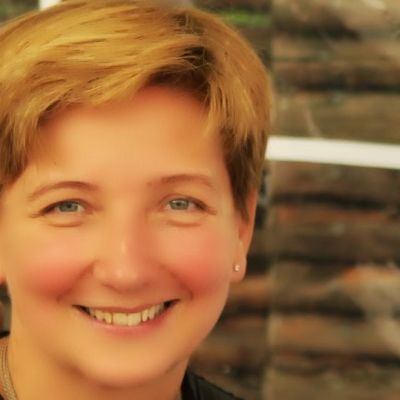Better stakeholder engagement: Interview with Oana Krogh-Nielsen

Oana Krogh-Nielsen, Head of PMO for the National Electrification Program at Banedanmark, spoke at Nordic Project Zone and I was lucky enough to catch up with her to ask about the amazing projects she is working on. Here’s what she had to say.
Hello Oana! Let’s get started: can you explain your job?
I lead the Program Management Office within the Electrification Programme (EP) of Banedanmark. In November 2012, the Danish Electrification Programme was established as a part of a major investment in modernization of the Danish railways, and has the scope to carry out the electrification of major parts of Banedanmark’s network throughout the next 10-15 years.
The EP PMO is a multidisciplinary, multicultural organization, comprising of over 50 staff from various backgrounds within traditional program management such as planning, quality, financial, risk, management, etc as well as rail specific disciplines, supporting the execution of the EP projects. The EP PMO is also responsible for in the realization of the main electrification contract, currently in tender.
Wow, that’s a big program. What’s the biggest challenge at the moment?
The EP PMO drives the tender for the electrification, which is a multi-billion contract which we expect to be awarded in 2015. The Electrification Programme intends to adopt the most recent and best technologies from comparable projects across Europe. The tendering process is a major project in itself, including management of the deliveries and alignment of more than 80 employees and consultants, across different organizations and cultures.
The program has a large number of internal and external stakeholders, inclusive of other interfacing programs, rail operators, rail authorities, safety authorities, the ministry of transport as well as the broad public and media. The daily management of the PMO organization in clear alignment with its stakeholders, whilst also driving the tender project towards a choosing the right supplier is my biggest challenge at this moment.
It must be a careful job to manage that mix of stakeholders with the scrutiny on your work. How have you built trust with your stakeholder community?
In Banedanmark we strive to perform meaningful work for the benefit of society and are firm believers that common understanding and cooperation are key to success for our organisation. Engaging and managing our powerful stakeholders is vital. We operate thus according to the Banedanmark leadership foundation, a framework available for all our leaders to help create a strong and flexible performance culture based on a constructive and dynamic cooperation between employees, leaders, stakeholders, partners and the political system.
Understanding each others’ drivers, challenges and success criteria is essential. We also use powerful vision statements to share with our stakeholders. Our programs and projects operate using established governance frameworks, within which we define a common understanding of our goals, deliveries and plans. We’re driven by a set of strong values contributing to ensuring a good and constructive climate.
I can see that approach would help lots of projects, not just major efforts like yours. And it involves a lot of communication: talking about success criteria, the vision and so on. What advice would you give a project manager about communicating on projects?
Identify and then address the needs of the project members, whilst bridging between many people, and assignments ongoing within the company. I have a large span in my daily work. Unpredictability and great independence in task performance characterize my workday. In addition to the focus on results and performance, it is important that I establish a framework that brings clarity and meaning in which the employees’ resources, potentials and involvement can be brought into play.
Another important focus in communication is to support and motivate employees and within the different layers in of the company to share knowledge and perform together.
Great, thanks. Part of successful communication is making sure you know to get your message across in a way your team will respond to. How do you identify what communication styles your team prefers?
In my experience, communication styles are interconnected to the different organizational cultures. Each employee assignment supports the objectives set for the company, and we must be able to set clear framework to ensure high quality performance whilst providing the basis for the well-being and motivation of our employees.
In Banedanmark we believe that the ability to communicate appreciatively is one of the cornerstones of good governance. The understanding of, and respect for us as people experiencing and understanding the world differently is a basic condition, that we take seriously within the company. Therefore we coach and are coached in perception and appreciative communication.
Coaching is definitely something that project leaders need to do. What other leadership advice do you have for project managers?
Leadership deals with people, management deals with processes and systems. You should therefore strive to take the holistic approach to your project management job. Focus on the human factor and behavioural aspects as much as you focus on schedules and deliveries. Be open and willing to learn and seek feedback from your organization on your own performance. Network with others, seek out leadership development programs and allow new knowledge to influence you. Most importantly, adjust your leadership style to fit the cultural aspects in your organization. Continually measure the climate in your team and address the issues that arise as priority tasks.
Thanks, Oana!
